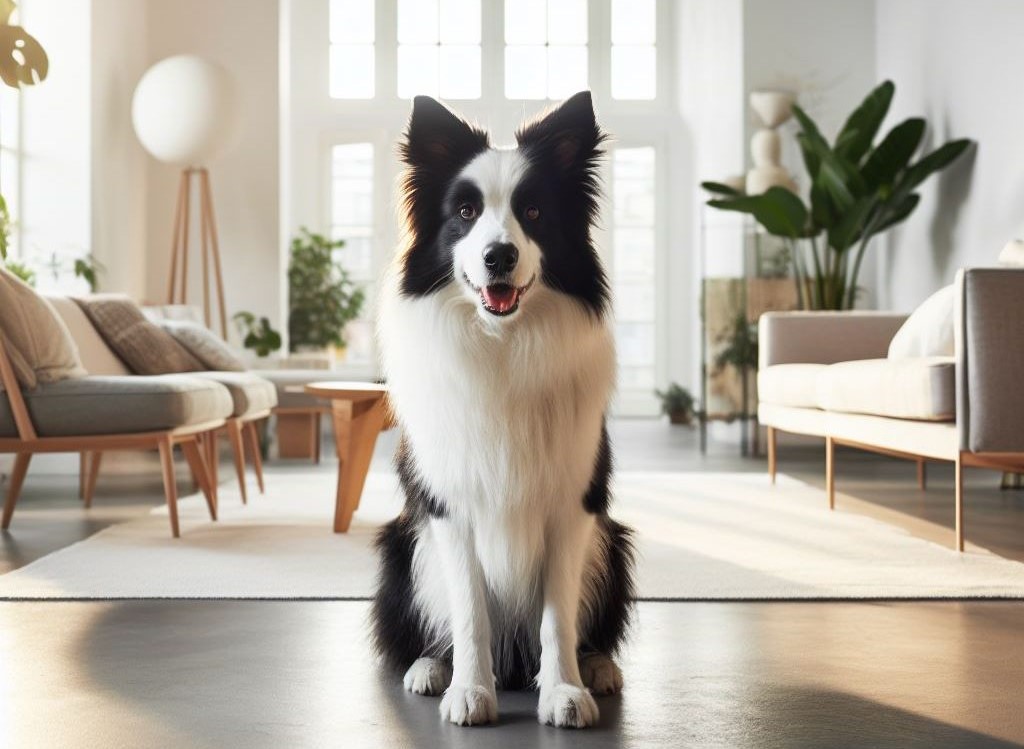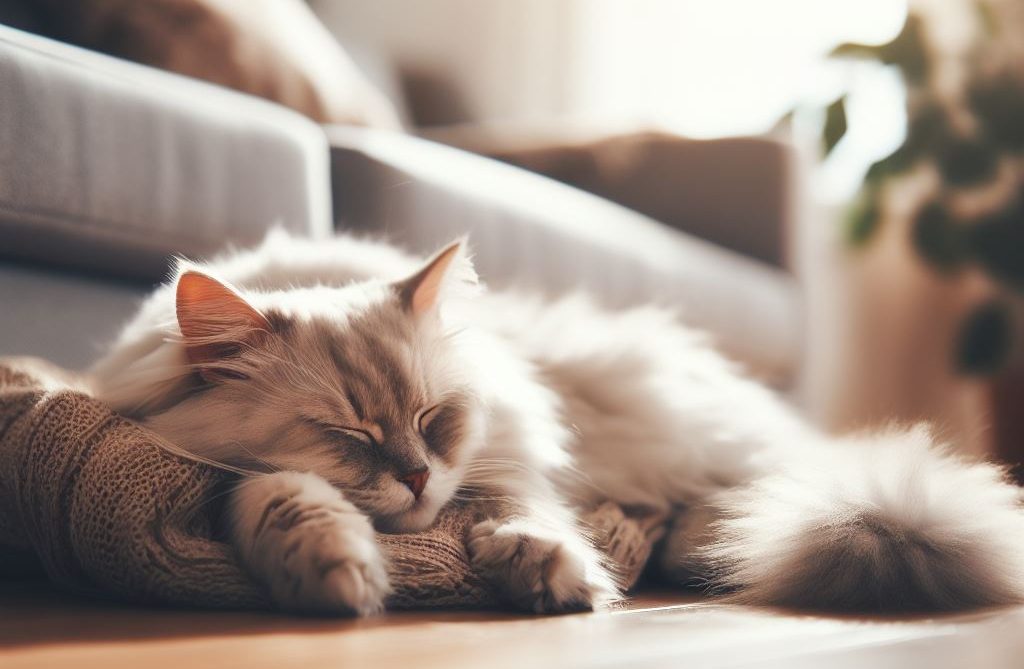Choosing the best wood flooring for pets, particularly active dogs, calls for a detailed analysis of wood type, finish, and hardness to ensure it withstands potential damage. First, certainly opt for the hardest hardwood flooring materials. Some tree species are harder by nature, so these wood materials can handle much more pressure and resist to dents and scratches much better. Brazilian cherry, hickory, maple and red oak are among the strongest ones available on Canadian market. The ones that pet owners should avoid are black cherry and walnut and yellow birch as they have lower hardness ranking.
Opting for hardwoods like oak or maple, celebrated for their durability, helps in minimizing the impact of scratches and dents from pets. Conversely, softwoods such as pine might succumb to damage more quickly. Additionally, finishes offering scratch and slip resistance, like polyurethane, are recommended, and choices like distressed hardwoods can discreetly mask minor damages with their natural textures.
Attention to the wood’s colour and grain pattern is pivotal, with a preference for lighter shades and complex patterns to skilfully conceal scratches and pet hair, preserving a clean look of the flooring. Choosing sustainable woods, certified by entities like the Forest Stewardship Council (FSC), ensures you are eco-conscious while also beautifying your home. Ensuring your chosen flooring provides comfort for pets and easy maintenance for owners, and balances durability with aesthetic appeal, creates a harmonious living space for all inhabitants.
When it comes to picking the best wood flooring for dogs and pets, it’s not always straightforward. Various options each bring their own advantages and disadvantages. This guide categorizes flooring types into two primary sections. Firstly, it investigates options for fans of wooden floors. Secondly, it explores non-wooden alternatives. From traditional hardwood to contemporary luxury vinyl, each type offers distinct advantages and possible downsides. This helps homeowners make a knowledgeable decision. Important considerations include scratch resistance, sustainability, and comfort, ensuring that homeowners pick flooring that is both stylish and pet-friendly, securing a pleasant and practical living environment for all.
For Owners with Wooden Floors:
1. Waterproof Hardwood Flooring
Hardwood flooring provides traditional elegance with enhanced protection against spills and accidents, ensuring durability amidst pet activity.
| Pros: | Cons: |
| 1. Resistant to water and moisture from spills or pet accidents. 2. Maintains the classic aesthetic of traditional hardwood. 3. Generally easier to clean and maintain. |
1. Can be expensive compared to non-wooden alternatives. 2. May still be susceptible to deep scratches or dents. |
2. Bamboo Flooring
Bamboo flooring is renowned for its hardness and durability, making it a suitable option for homes with pets. It resists scratches and stains better than many traditional hardwood options. Bamboo is also eco-friendly and provides a sleek, modern aesthetic to your living space.
| Pros: | Cons: |
| 1. Highly durable and scratch-resistant. 2. Eco-friendly, offering a sustainable flooring option. |
1. Susceptible to damage from excessive moisture. 2. It can be harder underfoot, which might affect pets’ joints over time. |
3. Engineered Hardwood Flooring
Engineered hardwood merges the beauty of traditional hardwood with layered construction for added stability and potential scratch resistance, suitable for homes with pets.
| Pros: | Cons: |
| 1. Offers the appeal of hardwood with enhanced durability. 2. Available in various finishes and styles. |
1. Varying quality across brands and products. 2. May not withstand heavy damage as solid hardwood. |
4. Cork Flooring
Cork, with its antimicrobial properties and capability to reduce allergens, not only resists scratches but also offers a soft, comfortable surface for pets to tread on.
| Pros: | Cons: |
| 1. Soft and cushion, providing comfort for pets. 2. Natural resistance to scratches and allergens. |
1. May get damaged with very sharp claws or high impact. 2. Can be affected by extreme temperature changes. |
For Owners with Non-Wooden Floors:
1. Laminate Flooring
Laminate provides a hardwood-like appearance while its sturdy top layer offers notable protection against pet-induced wear and tear, although it may be somewhat slippery for pets.
| Pros: | Cons: |
| 1. Provides a cost-effective alternative to hardwood. 2. Resistant to scratches and easy to clean. |
1. Can be slippery for pets, potentially causing movement issues. 2. Damaged sections might need replacing, as it cannot be refinished. |
2. Luxury Vinyl Flooring
Offering a plethora of design options, luxury vinyl flooring stands out for its robustness, resisting scratches, dents, and water, ensuring a lasting neat appearance amidst pet activities.
| Pros: | Cons: |
| 1. Excellent resistance to scratches and dents. 2. Water-resistant, making it safe from pet accidents. |
1. Can sometimes look less natural compared to hardwood. 2. Quality can vary significantly between products. |
3. Tile and Stone Flooring
Offering premium durability and ease of cleaning, tile and stone flooring stand up well to pet-related activities. Adding rugs may enhance comfort for pets and owners alike.
| Pros: | Cons: |
| 1. High durability and resistance to wear and tear. 2. Easy to clean and maintain. |
1. Hard and cold surfaces may be uncomfortable for pets. 2. Some tiles can be slippery for pets. |
4. Carpet Tiles
Carpet tiles deliver the comfort of carpeting while allowing for easy replacement of sections when they become stained or damaged, ensuring sustained aesthetics without comprehensive refurbishments.
| Pros: | Cons: |
| 1. Soft and comfortable for pets to move and lay on. 2. Individual tiles can be replaced in case of damage or stains. |
1. Less elegant and refined compared to other floor types. 2. Can trap odours and harder to keep clean from pet fur and accidents. |
Each flooring type, whether wooden or non-wooden, presents unique advantages and potential limitations for pet owners. By considering factors such as resistance to damage, ease of cleaning, comfort, and visual appeal, owners can make an informed decision that aligns with both the aesthetic aspirations for their home and the practical needs of their pets. Balancing durability with style will ensure a welcoming, harmonious living environment for all inhabitants, be they two-legged or four.
RULES TO FOLLOW WITH A DOG
Once a proper type of solid or engineered hardwood floors is installed, its durability will majorly depend on how well you look after your dog and follow some basic rules of floor exploitation.
- Trim and file dog’s nail regularly or use soft paws, vinyl caps, for protection.
- Try to prevent any spills on the floor. You can do it by placing your pet’s food and drink on a waterproof rug, for example.
If your dog is over 100 pounds and quite active, we would strongly recommend to look into installing laminate floor instead. Laminate floors have a special layer of protection that allows them to tolerate heavy pets traffic much better and with significantly fewer damages and scratches. If you still believe that laminate is quite boring and fake-looking, you should definitely shop around and see how many options are available nowadays that can be barely distinguished from hardwood floors from the first sight.



